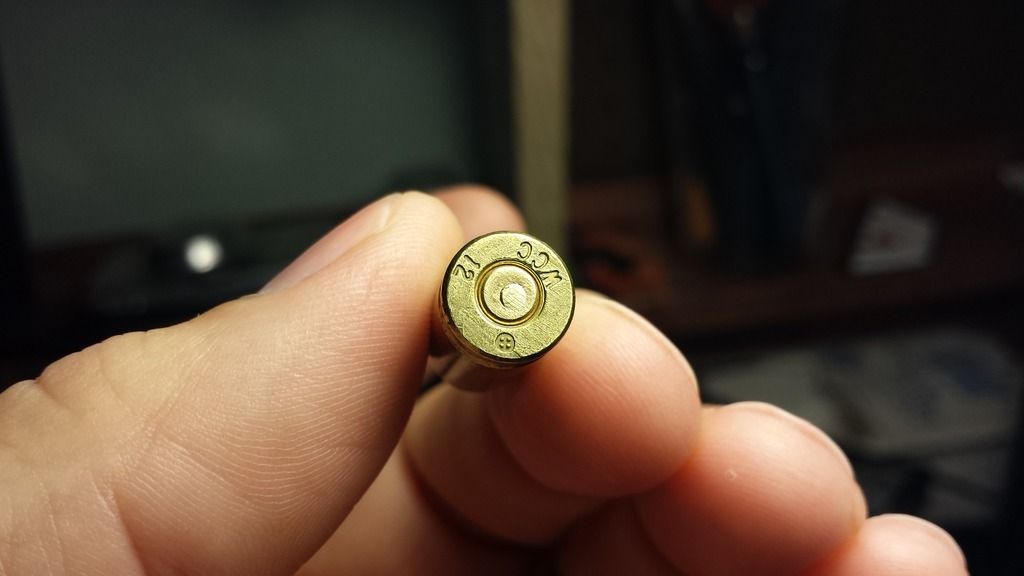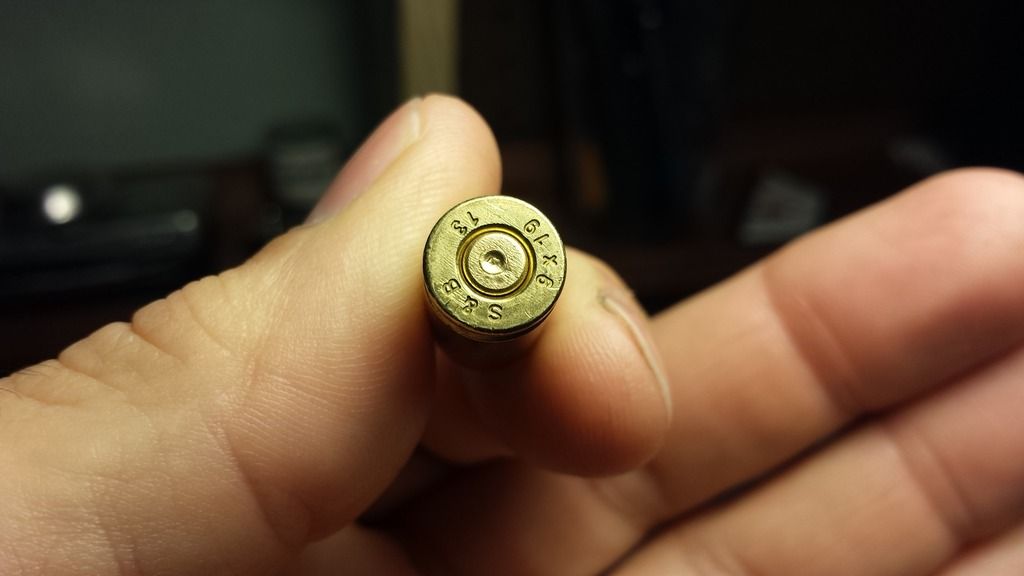I have a MKIII that just developed an issue with what I thought was light hammer strikes.
I recently began reloading using Sellier & Bellot primers. I thought maybe the primers were a little harder than what I had been shooting with factory ammo, so I removed the reduced power hammer spring that the MKIII had and put back in a new factory full power hammer spring thinking this would solve it.
Went out to the range yesterday and had the same issue. About one out of ten wouldn't ignite the primer. I also was shooting a well used MKII with fresh factory springs that had no issues with the same ammo (the MKII does not have the sear lever that blocks the firing pin).
This time a took a closer look at the primers of the fired rounds to compare the strikes from each pistol. I've include a picture of each. What has me a little baffled is the strike from the MKIII. It appears the firing pin never contacted the primer. The center area that is deformed is convex, not concave like a firing pin strike makes when hitting a primer. It appears to me that what is contacting the primer when the hammer falls is the slide (not sure what the area on the slide hold the round in the chamber is called). I think that round raised area on the spent primer is the result of pressing against the face of the slide with an empty hole where the firing pin should be coming through. This is happening to every round going through the MKIII, not just randomly.
I disassembled and clean and inspected everything and it looks good. My thought is that for some reason the sear is blocking the firing pin. I function checked the sear block on an empty chamber by cocking the hammer and slowly pulling the trigger at the same time pressing on the firing pin with a punch....I could feel the sear block releasing the firing pin before the trigger was pulled far enough to release the hammer.
The thought that the primer is igniting without a firing pin strike goes against the reason for the sear lever block doesn't it?
The first picture is of the MKIII strike or non strike. The second one is from the MKII. The third is the type of sear lever in this MKIII that is designed to block the firing pin until the trigger is depressed.
Any ideas?
![Image]()
![Image]()
![Image]()
I recently began reloading using Sellier & Bellot primers. I thought maybe the primers were a little harder than what I had been shooting with factory ammo, so I removed the reduced power hammer spring that the MKIII had and put back in a new factory full power hammer spring thinking this would solve it.
Went out to the range yesterday and had the same issue. About one out of ten wouldn't ignite the primer. I also was shooting a well used MKII with fresh factory springs that had no issues with the same ammo (the MKII does not have the sear lever that blocks the firing pin).
This time a took a closer look at the primers of the fired rounds to compare the strikes from each pistol. I've include a picture of each. What has me a little baffled is the strike from the MKIII. It appears the firing pin never contacted the primer. The center area that is deformed is convex, not concave like a firing pin strike makes when hitting a primer. It appears to me that what is contacting the primer when the hammer falls is the slide (not sure what the area on the slide hold the round in the chamber is called). I think that round raised area on the spent primer is the result of pressing against the face of the slide with an empty hole where the firing pin should be coming through. This is happening to every round going through the MKIII, not just randomly.
I disassembled and clean and inspected everything and it looks good. My thought is that for some reason the sear is blocking the firing pin. I function checked the sear block on an empty chamber by cocking the hammer and slowly pulling the trigger at the same time pressing on the firing pin with a punch....I could feel the sear block releasing the firing pin before the trigger was pulled far enough to release the hammer.
The thought that the primer is igniting without a firing pin strike goes against the reason for the sear lever block doesn't it?
The first picture is of the MKIII strike or non strike. The second one is from the MKII. The third is the type of sear lever in this MKIII that is designed to block the firing pin until the trigger is depressed.
Any ideas?









